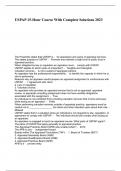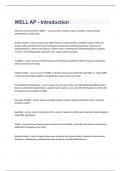Summary
Summary Human Sports and Motor Control - Radboud University
- Module
- Institution
I summarised all relevant information of the lectures, and I passed the exam (with only studying the content in here) with an 8. I hope it helps you with what to focus on. Good luck! :)
[Show more]












